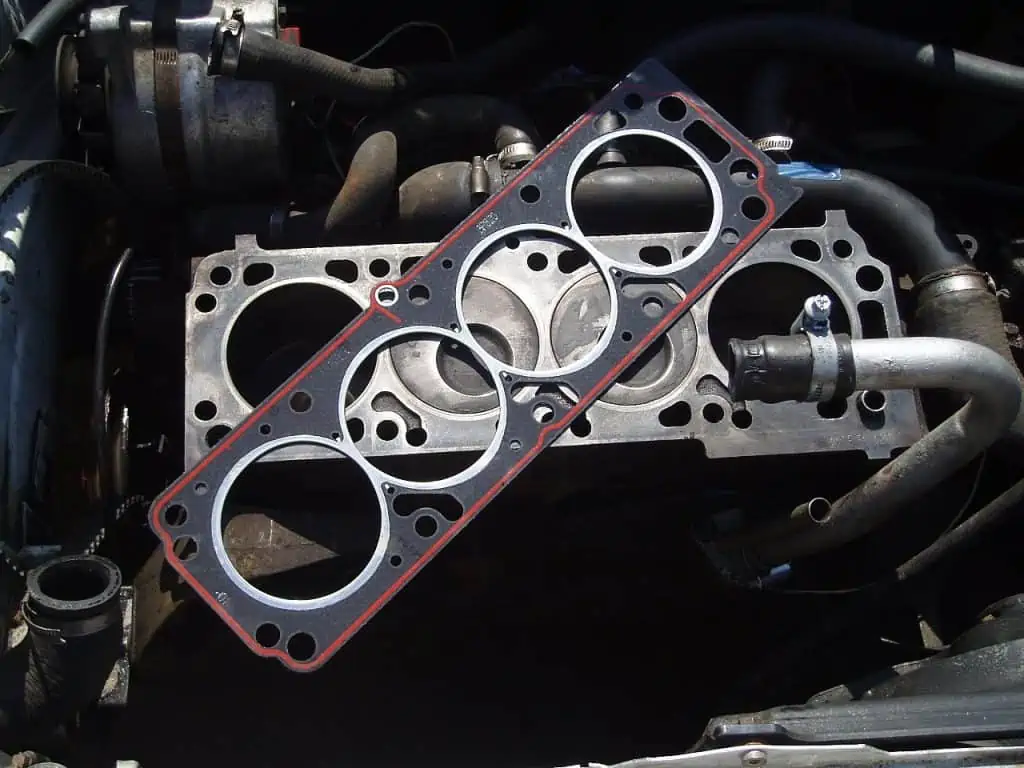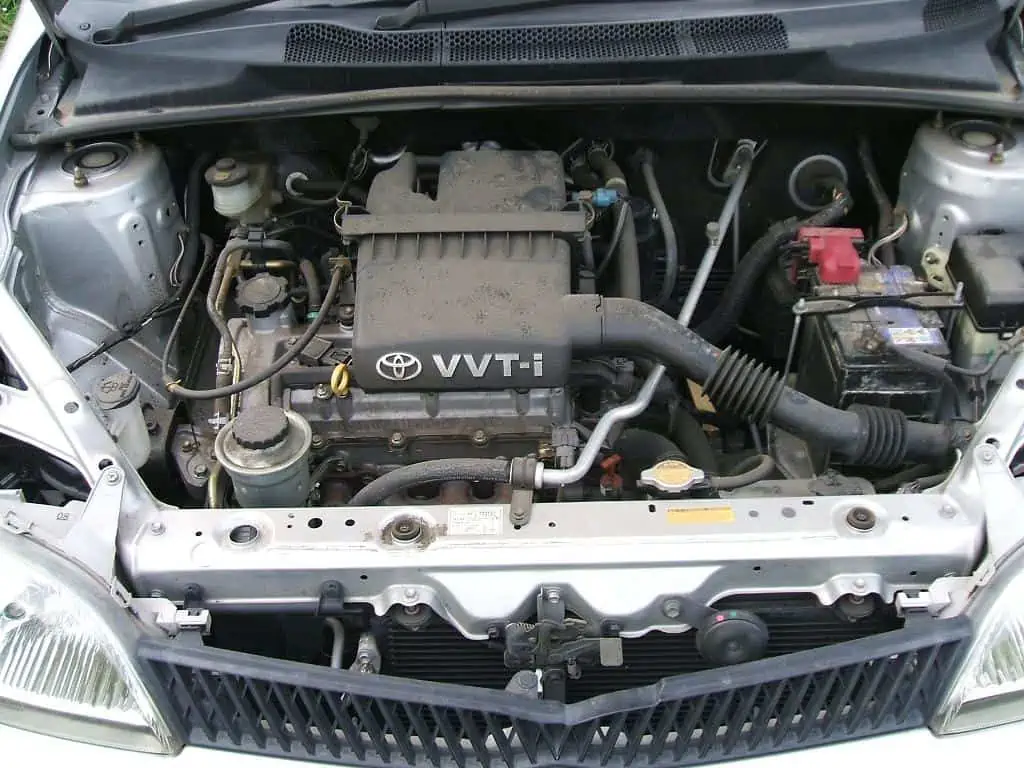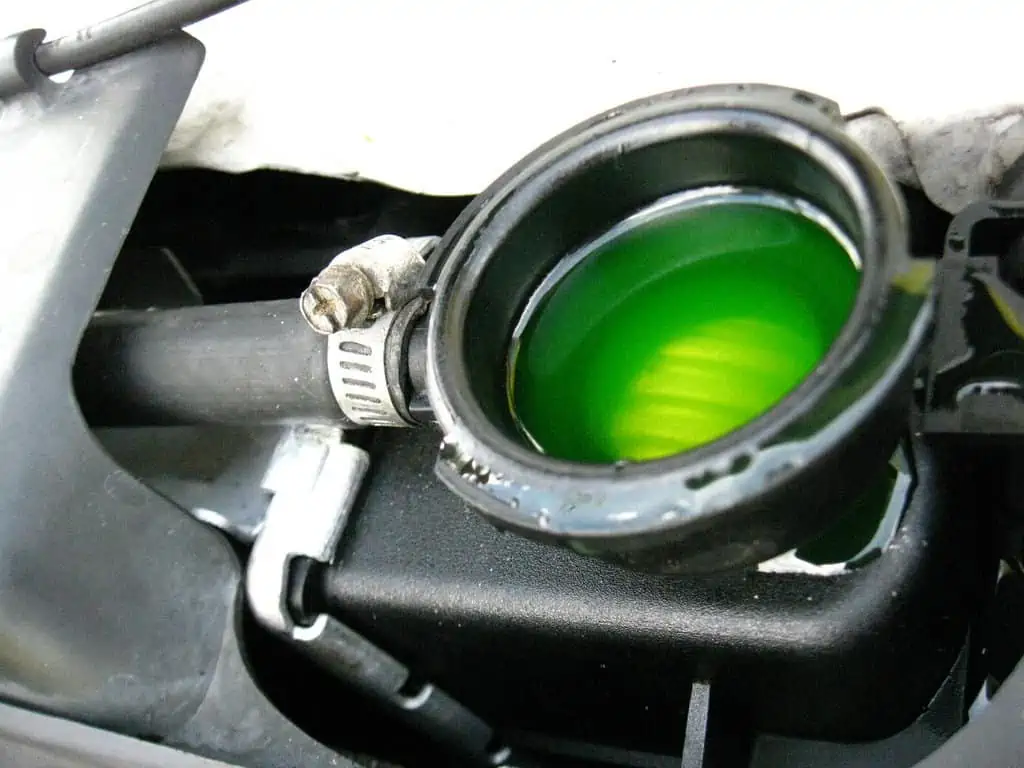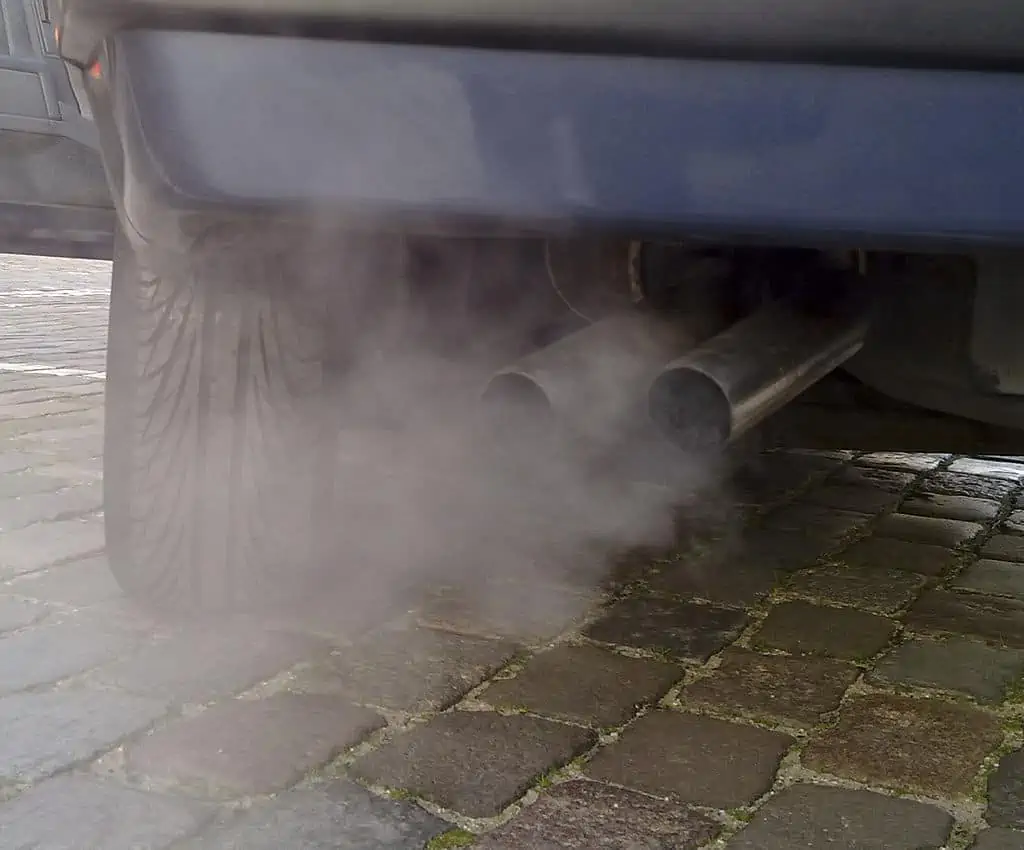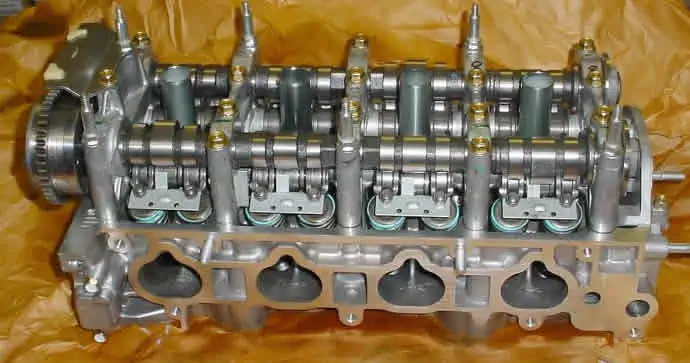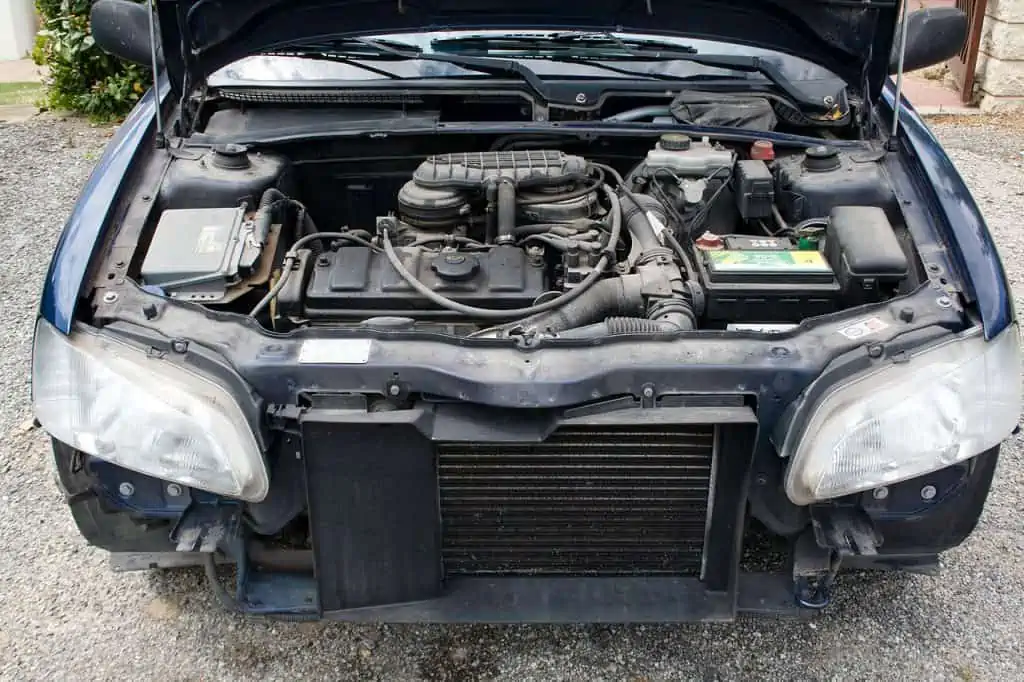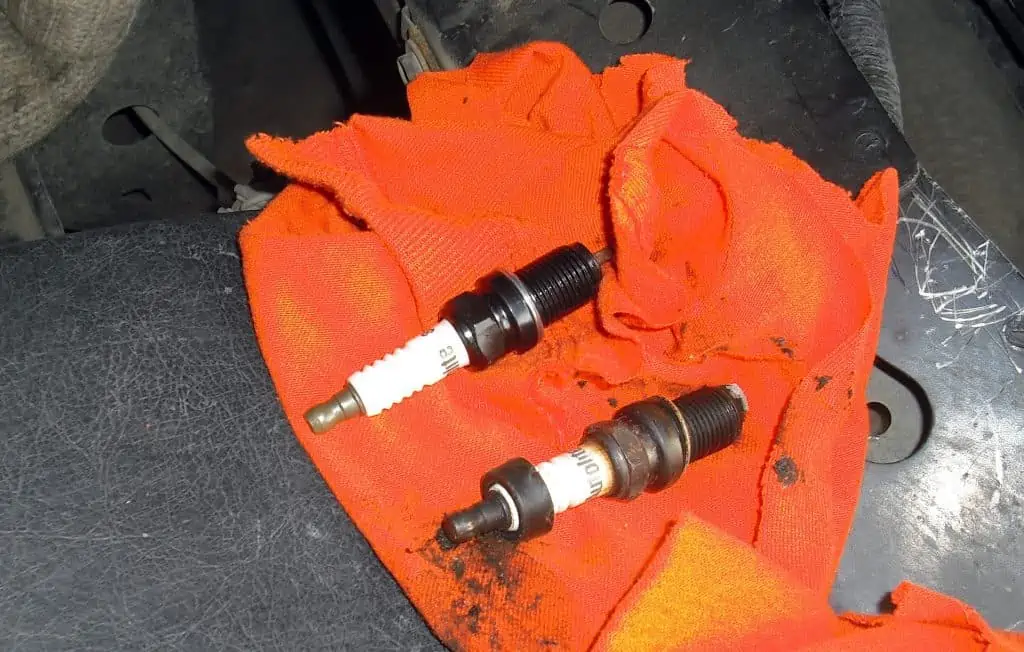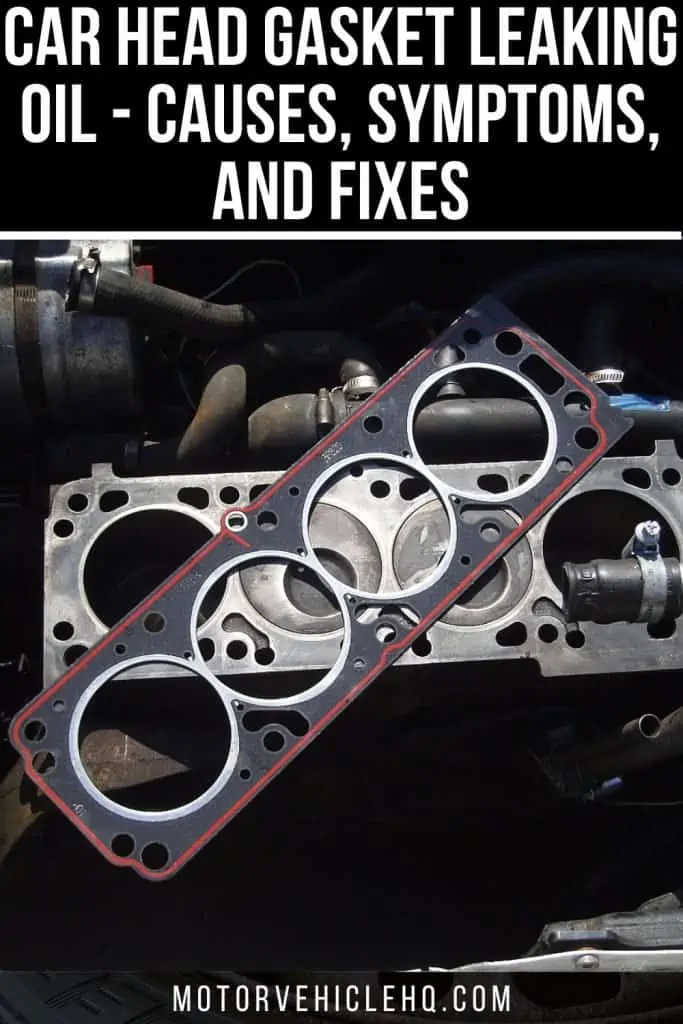Is the head gasket leaking oil? I’m sorry to be the one to deliver bad news, but fixing a blown head gasket will be incredibly expensive. The good news is that it might not be a head gasket issue if you notice oil leaking from the outside.
It could be a valve cover gasket issue instead. It is significantly less expensive than changing a head gasket yet being just as vital. Everything you need to know about head gasket leaking oil will be covered in this post.
One of the last things a mechanic wants to tell you is that your engine’s head gasket is leaking. For the majority of drivers, it can be difficult to understand why this repair can be so pricey.
The majority of casual car owners don’t understand how their engines work or what each component does.
One of those parts is the head gasket; while you might recognize the word, there’s a good chance you have no idea what it does or why it might have a problem.
Although cylinder head gasket leaks are not often, they are an engine issue that most automobile owners are very concerned about.
The Head gasket is crucial in ensuring that the combustion chamber is leak-free. To guarantee an ideal combustion cycle, it serves as an engine sealing agent and shields the cylinder from engine oil and coolant mixing.
A blown head gasket can be disastrous. Before it results in an expensive engine repair, you may seal a cylinder head gasket leak for a few dollars.
So let’s examine why your head gasket is indeed leaking oil, why it might be happening, and what you can do to fix it.
Head gasket (in dark gray with a red border) by Collard / CC BY-SA 3.0. It can be disastrous if a head gasket blows. You can fix a cylinder head gasket leak for a few bucks before it necessitates an expensive engine repair.
A Head Gasket: What Is It?
Since a head gasket appears to be such a tiny and inconsequential component of the engine, many drivers are taken aback when they first see one.
Between the cylinder head and the engine block is where the head gasket is situated. It appears to be of little significance because it is so thin and covered in holes for the cylinders.
A head gasket is typically constructed from layers of steel and elastomer. This might have been constructed of graphite or asbestos in older automobiles. It ensures the combustion chamber is sealed and stops coolant and oil leaks when it seals in place.
Without a head gasket, your engine won’t be able to produce enough power to function correctly because the combustion reaction won’t be able to occur or will be contaminated by too much air or not enough pressure.
Additionally, a functioning head gasket guarantees a cleaner engine. Instead of leaking from the engine into the atmosphere, dangerous gases are driven into your exhaust. Modern head gaskets are much more resilient than those made of graphite and asbestos in the past, but they are still susceptible to wear and tear and mechanical failure.
A Valve Cover Gasket: What Is It?
The engine’s valve cover is exactly what it sounds like—a cover. When you open the hood on older engines, you can see that portion of the engine. To see the valve cover in the majority of current autos, you must remove the plastic cover.
A little additional information: your car includes several valves, which are the mechanism that regulates the opening for the fuel to enter cylinders and the exit for exhaust gases. The valve is oiled, much like any other moving component. The cover’s purpose is to keep contaminants out and keep the oil within.
Between the valve cover and the cylinder head is where the gasket is located. It serves the same purpose as the head gasket in preventing oil leakage. The gasket for the valve cover is often constructed of cork, plastic, or occasionally metal. The gasket may wear out over time.
Oil can either seep out of or into the engine when a head gasket fails. A ruptured valve cover gasket, however, can only cause oil to spill outside the engine.
Therefore, if you notice oil leaking outside, the cause could either be a blown head gasket or a damaged valve cover gasket. But how can you distinguish between them?
The Head Gasket Leaking Oil: What Would Cause This to Happen?
It’s commonly referred to as being blown when your head gasket begins to leak oil. A blown head gasket is unable to maintain a seal, which makes it unable to hold pressure and retain fluids.
1. The Engine Overheating
There are a few reasons why a head gasket can blow, but an overheated engine is by far the most frequent one. Although a head gasket is made to withstand high temperatures, if the heat in your engine exceeds what it can take, the head gasket will wear out much more quickly.
A head gasket will expand in the heat and then compress once the engine cools because it is comprised of metal. This will eventually fail if it happens repeatedly.
An automotive engine by Carolla / CC BY-SA 3.0. Although a head gasket is designed to tolerate high temperatures, it will wear out considerably more quickly if the engine’s heat is greater than what it can handle.
2. Pressure Build-Up In the Cylinder Head
Too much pressure can build up in the cylinder head if you have certain pre-ignition issues and your combustion reaction’s timing is wrong.
This excessive pressure can also lead to the failure of your gasket, just like too much heat. You’ll note that your engine seems to be running very rough in this situation, especially when it starts up or at idle.
3. The pH of the Coolant
To keep your engine operating at ideal temperatures, you must preserve the coolant’s integrity. Given that heat can result in a blown head gasket, it makes sense that your coolant may also be having issues.
The pH balance will be out of whack if your coolant becomes too contaminated over time from not being replaced regularly, and its acidic nature may cause your gasket to wear down earlier than it should. The same thing can result in issues with electrolysis wearing out your gasket.
Whatever the reason for your head gasket blowing, if it can no longer maintain a perfect seal, you risk having oil leaks. The important thing to keep in mind in this situation is that a burst head gasket often results in internal mixing and leakage of coolant and oil.
While there is a distinction between your head gasket leaking oil internally and externally in this situation, it is extremely uncommon for your head gasket to leak oil externally.
Is the Head Gasket Leaking Oil to the External Components?
The problem is usually with a valve cover gasket, an intake gasket, the external oil supply tube itself, or a galley plug when you suspect your head gasket is leaking oil outside.
These are frequently misidentified as the head gasket’s exterior oil leak source. All things considered, it’s highly improbable that your head gasket is externally leaking oil.
Therefore, be sure to look at those other concerns before reporting an exterior oil leak. As we previously stated, this can be frequently misdiagnosed, and even a skilled mechanic may fail to notice these issues.
1. Leaky Valve Cover Gasket
If your valve cover gasket leaks, your car will likely have an oil-covered valve cover and possibly even smell like burning oil while you’re driving. Your exhaust manifold will catch fire if the oil from the valve cover hits it.
This is the most frequent reason for oil to seep down the sides of an engine, which you can mistake for a head gasket issue. The valve cover gasket is vulnerable to deterioration and breaking due to prolonged exposure to heat, dirt, and debris, just like your head gasket.
2. Leaking Intake Gasket
Gas flows around your intake manifold, helping to seal coolant and oil as well. Not every intake manifold gasket leaks oil, coolant, or neither because every engine is made differently. However, if your intake manifold gasket has been broken, the oil may be flowing out and may lead you to believe that the leak is coming from the head gasket.
3. Leaking Oil Galley Plug
Oil galley plugs are used to cover holes that have been made in the front of the engine block to enable oil to be sprayed onto the timing chain while the engine is operating, though you won’t find them in every engine.
Automotive engine coolant by EvelynGiggles / CC BY 2.0. You need to maintain the integrity of the coolant if you want your engine to run at appropriate temperatures. It makes it likely that your coolant would be having problems given that heat can cause a blown head gasket.
The stopper can be used to empty the area and make cleaning possible. However, over time, the dowel pin that fits in the plug may deteriorate and lead to leaks.
4. Leaking Oil Line
Your engine’s oil is transported through a network of tubes, and any one of them could develop a leak where it joins one engine part to another.
Even the line itself may sustain damage from a microscopic crack or hole and begin to leak. This could also leak on the engine in a way that deceives you into believing it’s a head gasket leak when it’s not, depending on where it happens to be.
Head Gasket Leaking Oil: What Symptoms Should I Look Forward to?
First, let’s look at the signs of a bad head gasket. Typically, the signs are clearer and simpler to identify:
1. Leakage of Oil from the Engine
Let’s start with the symptom that probably got you wondering in the first place: engine oil spilling out. Even while this is not a typical sign of a blown head gasket, it might nonetheless happen.
As previously stated, a burst head gasket rarely causes oil to seep outside the engine. Even so, if you notice oil on the middle to lower portions of your engine, there may be a head gasket issue.
That is not to say that an oil leak from the valve cover can’t result in this since it can drop down the engine. However, given that the valve cover is situated there, you’ll probably also notice that the upper portion of the engine is oil-covered.
However, if the leak is solely coming from the engine’s bottom, you have a completely different issue. This indicates that there is an oil pan leak. Either the pan is broken, or the gasket is no longer effective.
Look to see if you have any of the following other symptoms in addition to a head gasket leak:
2. Blue or White Smoke Coming from Your Car’s Exhaust Pipe
Your exhaust pipes emitting blue or white smoke is one of the most typical signs of a bad head gasket.
As previously indicated, an engine oil leak from a burst head gasket tends to occur inside the engine rather than outside. The oil that spills into the cylinders will burn with the gasoline and air combination in the engine. Your tailpipes start to emit blue smoke as a result of this.
A heavy white smoke, meanwhile, indicates that the cylinders contain too much moisture. When it’s cold outside, water and moisture might get inside the engine. Because of this, it’s quite normal to observe white smoke rising from your tailpipes when you start your car on a cold morning.
The smoke could be caused by coolant leaking into the cylinders and being burned together with the fuel and air combination, though, if it is particularly thick and continues even after the engine has warmed up. Of course, thanks to a burst head gasket.
Either blue or white smoke may be present. Whatever fluid is getting into the engine’s cylinders depends on which area of the head gasket is leaking. In either case, the smoke from a gas engine should be clean and virtually odorless.
As the last point, your car can also emit black smoke. When this occurs with a gas engine, it indicates that your engine is using too much gasoline even though it is relatively usual in a diesel engine (especially older ones).
Smoke from a car exhaust by Ruben de Rijcke / CC BY-SA 3.0. One of the most common indicators of a bad head gasket is your exhaust pipes spewing blue or white smoke.
There are numerous possible causes, but the head gasket is unrelated. This could be brought on by a clogged air filter, problematic fuel injectors, or a broken Mass Air Flow (MAF) sensor. The worst-case scenario is that your piston rings are damaged.
3. Mixing of Oil and Coolant
There are numerous ways that the head gasket can rupture and leak. It can leak in a way that permits the two fluids to combine without leaking them into the engine’s cylinders or outdoors.
So how can you tell whether your coolant and oil are mixing? Check the engine oil dipstick first. It’s not too difficult:
- Find the oil dipstick for the engine. ‘Engine’ or ‘Oil’ is typically written on the yellow handle.
- Remove the dipstick to check the fluid.
- The oil on the dipstick should either be clear or black and thick (in this case your oil is a bit old). However, if the oil is light brown and resembles gravy, this indicates that coolant has been incorporated into the oil.
It is also simple to check for oil in the coolant:
- If you’ve been driving it, give the engine time to cool for at least 15 minutes. When the radiator is still warm, you should avoid opening the radiator cap.
- Look inside the coolant by opening the radiator cap.
- The two fluids are mixed if the coolant has brown and black flecks. It will be rather simple to identify the particles because the two fluids don’t mix.
No matter how the gasket leaks, the two fluids shouldn’t be combined. When coolant and oil combine, the oil’s ability to lubricate the engine is reduced, which increases the risk of engine overheating and excessive wear.
In the meantime, the ability of the coolant to transfer heat away from the engine will be decreased if oil mixes with it. This can lead to engine overheating and long-term damage.
4. A Radiator with Bubbles
The presence of bubbles in the radiator indicates that the head gasket is leaking, enabling combustion gases to enter the cooling system and escape. Instead of the oil and coolant mixing, the leak may be to blame. As an example, check:
- If you’ve been driving, wait until the engine is completely cooled. Once more, avoid opening a hot radiator cap.
- Open the radiator cap once it has cooled.
- Check the coolant in the radiator after starting the engine. Don’t touch anything, and maintain a safe distance.
- A small amount of bubble is normal; it typically indicates that there is some trapped air in the system. However, if it continues after 5 to 10 minutes of idle, there is a cooling system leak.
- Reinstall the radiator cap after shutting the engine off.
A blown head gasket that is enabling combustion gases to enter the system is the most frequent cause. However, a flawed radiator pressure cap or cooling system damage.
An engine cylinder head by Kauczuk / CC BY-SA 3.0. If you have specific pre-ignition problems and your combustion reaction’s timing is off, too much pressure may accumulate in the cylinder head. Additionally, this increased pressure may cause your gasket to fail.
In any event, coolant bubbles are undesirable since they can decrease the system’s ability to effectively keep your engine cool. Check any other symptoms to rule out a head gasket issue. If there are no additional symptoms, a cooling system issue can be the cause.
5. Low Level of Oil or Coolant
The levels of oil and/or coolant will also drop because a head gasket can result in leaks. You must use the engine oil dipstick to check the oil level because it is somewhat tougher to detect a low oil level. As an example, check:
- Find the engine oil dipstick after turning the engine off.
- Remove it, clean the stick, and then properly reinstall it into the slot.
- Examine the dipstick after removing it. The minimum and maximum oil levels are marked with indicators.
As a result of the engine overheating, a low coolant level is often more apparent. Check your coolant reservoir to determine if it is at the minimum marker if your temperature gauge is higher than usual.
There may be additional causes for your engine’s oil or coolant loss in either situation. You could be experiencing a quick oil loss due to an oil pan leak. In the meantime, a cooling system leak can be the cause of your coolant level being low.
But if you can’t seem to find a leak, you probably have a head gasket leak, which is making the fluids in the engine burn off. A bad head gasket is usually always to blame for unexplained oil and coolant leakage.
6. Engine Misfires and Compression Loss
As previously noted, the head gasket aids in maintaining optimal compression by preventing combustion gases from escaping. Engine misfires happen when one or more of the cylinders lose compression.
An engine misfire occurs when one or more of the cylinders fire improperly or at the wrong time, resulting in improper fuel and air combustion. When you try to accelerate with a bad head gasket, the engine will frequently seem hesitant.
Remember that there are a few other potentials (and less severe) causes of engine misfires. For instance, a malfunctioning spark plug or ignition coil frequently causes an engine to misfire. Since many people frequently neglect to change their spark plugs, this is one of the most frequent causes.
Head Gasket Leaking Oil: How Can I Tell If the Head Gasket Is Blown?
It’s quite likely that you have a blown head gasket if you experience more than one of the symptoms listed above. Unfortunately, there isn’t just one reliable approach to learning. Since the gasket is located inside your engine, you can’t physically check it, and removing it would be quite time- and money-consuming.
The best you can do is determine if you have more than one of the aforementioned symptoms. If you just experience one of the symptoms, you might be dealing with a different problem unrelated to the head gasket.
What about the valve cover gasket, then? What symptoms are present? That then leads well into the following section.
What are the Signs of a Defective Valve Cover Gasket?
The engine and valve cover will be dusty, which is the most noticeable indication. You’ll probably notice regions near the valve cover to be greasy and covered in oil if there is a valve cover gasket leak since the engine will likely leak to the outside of the engine. This should be quite evident because oil draws trash.
Car engine bay, with the radiator in front by Ludovic Péron / CC BY-SA 3.0. The head gasket is leaking if there are bubbles in the radiator because this allows combustion gases to enter the cooling system and escape. The leak might be to blame rather than the oil and coolant combined.
The valve cover is the topmost component of your engine, as was already discussed. If the leak appears to be coming from the top of your engine, your valve cover gasket is probably damaged.
A misfiring engine is another sign, and this is when you should start to get concerned. If oil begins to seep into the spark plug tube, the engine will misfire as a result of a damaged valve cover.
This poses a fire risk in addition to interfering with spark plug performance, which leads to engine misfiring. Therefore, if you suspect a valve cover gasket leak, you should fix it as soon as you can.
How Much Is the Repair Cost for Head Gasket Leaking Oil?
As we’ve demonstrated, a head gasket leak or a valve cover gasket leak can both cause an exterior oil leak. In either case, you should not overlook this awful circumstance and should take immediate action to resolve it.
You’ll have to spend between $1,000 and $2,000 to replace your head gasket if it turns out you have a faulty one. The cost of the head gasket alone ranges from $200 to $500, but labor adds at least another $800 to the total.
This is due to the skill and time required to replace the head gasket. It requires taking out your engine’s cylinder head and camshaft from the top. Your mechanic will then need to clean the area, install the new head gasket, and finally put the top of your engine back together.
In some autos, this process can take up to eight hours to complete. You can now understand why the labor and overall cost are high.
If a valve cover gasket leak is discovered, it is typically far less expensive to repair. For most autos, the overall cost averages around $350, with the gasket alone costing about $50.
Can I Fix the Head Gasket Leaking Oil Problem on My Own?
The question you’re likely wondering now is: Can you do it yourself to save money with such a high repair cost? If you have to inquire about the head gasket, you most likely can’t.
To replace the head gasket is to take your engine out and rebuild half of it. If you lack the necessary skills and equipment, the process is extremely challenging and nearly impossible.
In general, we advise hiring a pro to handle this task. Even if you are capable of doing it, it is simple to make a mistake that will cause more harm than good to your engine.
What about replacing the valve cover gasket then? That seems possible. Unexpectedly, yeah. While replacing a valve cover gasket is not quite as straightforward as, say, replacing a spark plug, it is realistically achievable.
Depending on the sort of engine you have and the make and model of your car, the difficulty may vary. For instance, an inline-six engine is typically easier to work on than a larger engine like a V8. However, we believe it is still feasible. As an illustration of the procedure, consider the following:
Valve Cover Gasket Replacement Procedure
The procedures for changing a valve cover gasket are as follows:
The spark plugs the old and the replacement by Myke2020. Another indication—and the point at which you should start to worry—is an engine that is misfiring. The engine will misfire if oil starts to seep into the spark plug tube because the valve cover is damaged.
- Remove any hose and cable connections before removing the plastic engine cover. Along with the spark plugs and their connectors, this also refers to the vacuum line. When reconnecting the cables for a distributor-type ignition coil, mark the cables with the cylinders.
- The valve cover must first be removed, then the bolts. Gently tap the valve lid with a rubber mallet if it appears to be stuck. After removing the lid, be careful not to drop anything into the engine.
- Take out the old gasket and any leftovers. To assist with removal, you can use a plastic scraper; DO NOT, however, use a metal scraper.
- Use a clean rag to wipe down the surface. If you’re having trouble, gently scrub with a wire brush.
- Check the service handbook or the directions for the gasket to see if applying silicone sealant or RTV is required for your vehicle.
- Install the cylinder head gasket. Make sure it fits well and take your time.
- Before replacing the valve cover on top of the cylinder head, thoroughly clean the surface once more. Check the alignment, and while you’re at it, hand-tighten a few bolts.
- Make sure everything is in its appropriate location before tightening them. Ensure that you tighten them to the appropriate torque specification, if necessary.
- Reattach the cables and hoses. Allow the sealant to settle by letting the automobile sit for at least 24 hours.
- Check for leaks after starting your engine and letting it idle for a while.
Our manual tends to oversimplify things. The full instruction may be found in YouTube videos. To understand more, you can also read articles about valve cover gaskets.
The Conclusion
In conclusion, a head gasket blowout may be the cause of an exterior oil leak if there is one. This is uncommon, though, as internal leaks in head gaskets are the norm. It either leaks coolant or oil into the engine’s cylinders or mixes coolant and oil.
Instead, a valve cover gasket leak is more frequently indicated by an exterior leak. A head gasket leak is most likely to be present if the leak appears to originate from the middle of the engine. However, if it originates from the top of the engine, a valve cover gasket issue is more likely to be the cause.
In any event, oil is similar to blood in that it should remain inside your engine. Locate the source of any oil leaks right away and fix them as soon as you can. Internal engine wear can be excessively accelerated by low oil levels. And in rare circumstances, an oil spill may potentially pose a fire risk.
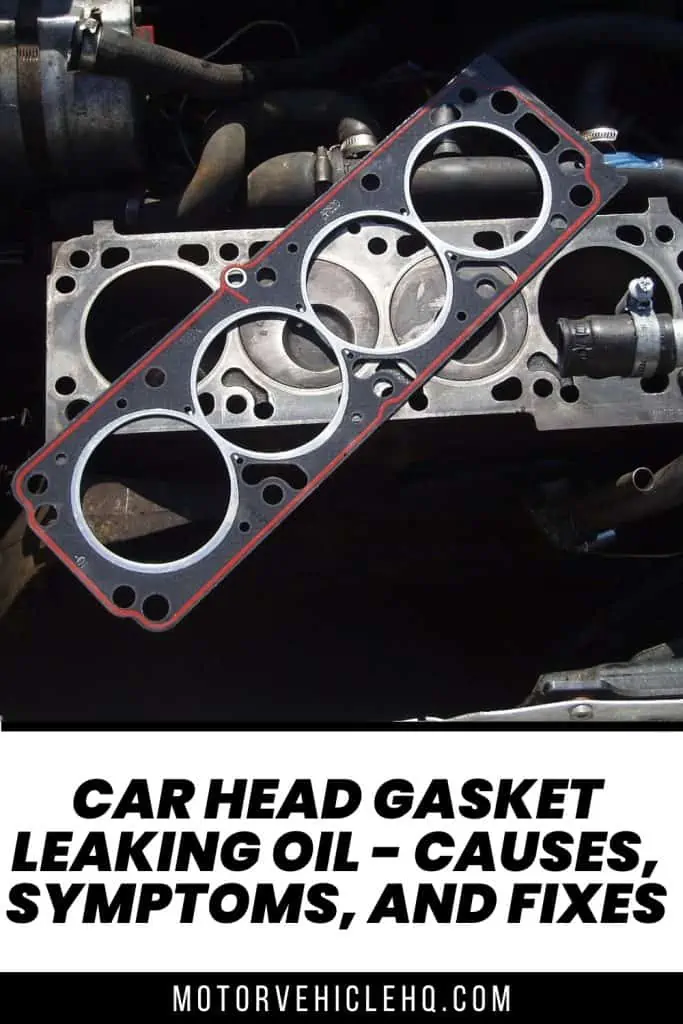
Head gasket (in dark gray with a red border) by Collard / CC BY-SA 3.0

Jim Wicks is the founder of MotorVehicleHQ. With over two decades of experience in the automotive industry and a degree in Automotive Technology, Jim is a certified car expert who has worked in various roles ranging from a mechanic, car dealership manager, to a racing car driver. He has owned more than 20 cars over the past 15 years. Ask him about any vehicle you see on the road and he can tell you the make, model and year. He loves the aesthetics of all things cars, and keeps his vehicles in pristine condition.
In his free time, Jim enjoys getting his hands dirty under the hood of a classic car or taking long drives along the country roads. His favorite car? A 1967 Shelby GT500, a true classic that, according to Jim, “represents the pure essence of American muscle.”
